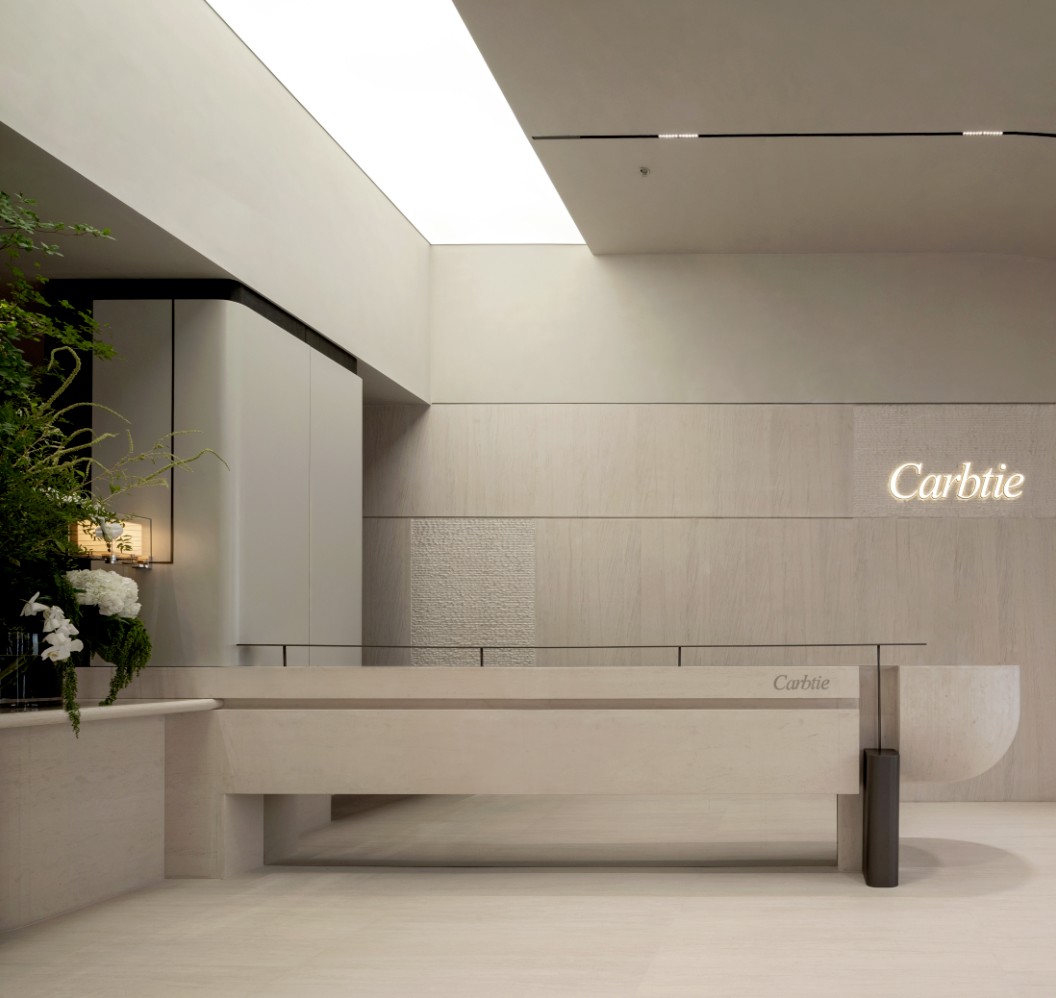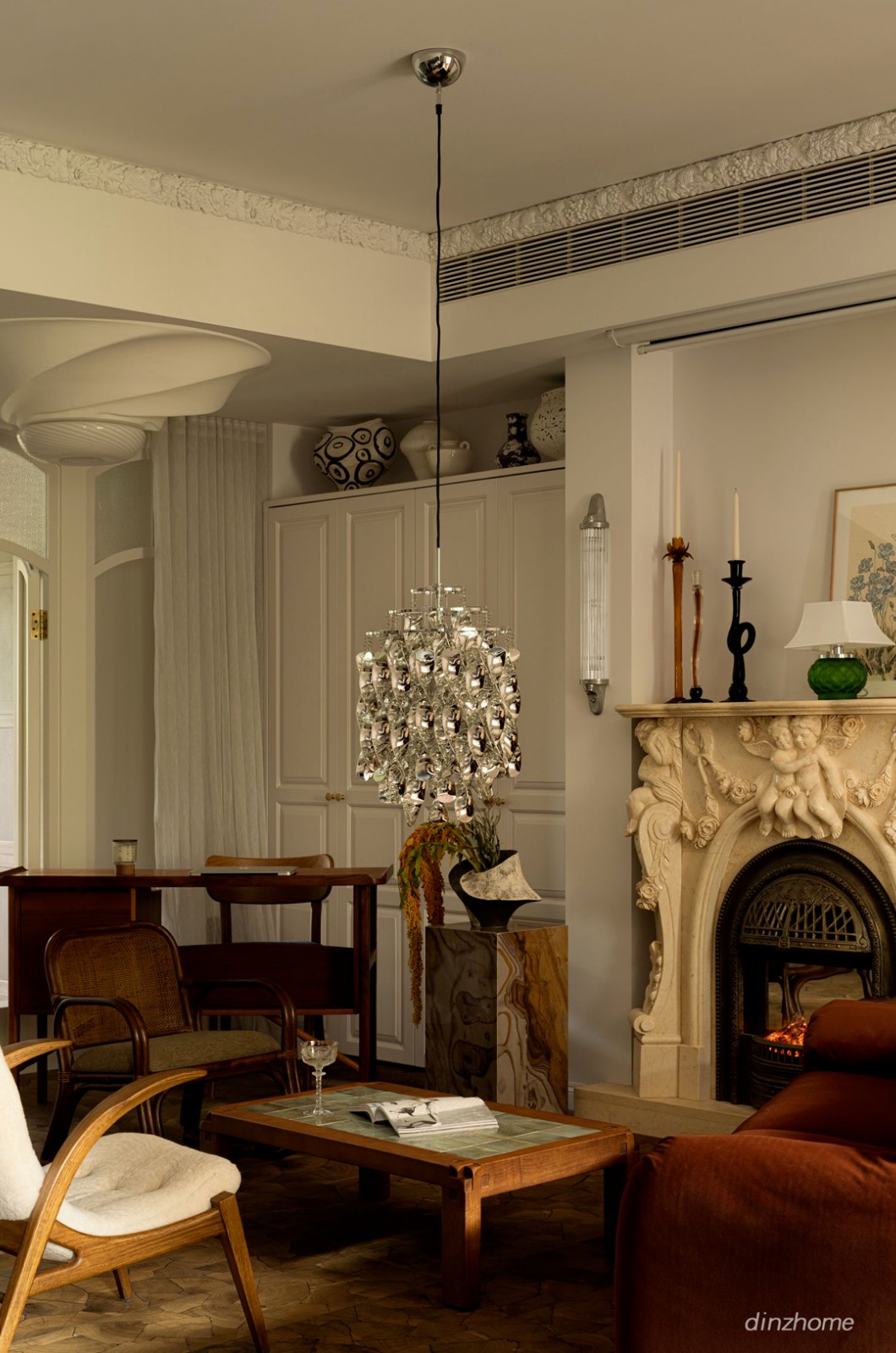RGB Girod+Anton Arquitectos
2012-06-11 00:00
在文献记录过程中,我们发现了一位英国社会学家写的一篇关于教育系统及其对学龄前儿童的影响的文章。图中画的是一只3岁男孩做的鸟。画中充满了想像力,有很多细节,而且故意不成比例,在这个男孩的容貌下,动物最显著的部分显得更大了。它的尾巴羽毛几乎被描述为火焰,在飞行过程中有一条显示速度的大轨迹。一年后,在托儿所后,男孩又被要求画一只鸟。这是令人震惊的是,证明所有的想象力显示前一年,现在被简化为一个简单的“V”形状的匿名人物。
During the documentation process we found an article written by a British sociologist about educative systems and its influence on preschool children. In it a drawing of a bird made by a 3-year old boy was shown. It was drawn full of imagination; plenty of details and intentionally out of proportion, where the most remarkable parts of the animal appeared bigger under the boy’s look … its tail had feathers described almost as flames and had a big trail showing speed during flight. A year later, after attending nursery, the boy was asked to draw a bird again. It was shocking to prove that all that imaginative display made a year before was reduced now to a simplistic “V” shaped anonymous figure.
我们明白,在我们“成熟”的外表下,我们永远无法实现一个小男孩的想象力,我们不应以我们的偏见、成人的假设或我们在设计过程中缺乏的技能来限制学龄前儿童参加未来托儿所的潜力。
We understood that under our “grown up” look we would never be able to achieve a small boy’s imagination, and that we should not restrict the potential of preschoolers attending the future nursery with our prejudices, adult’s assumptions or just our lack of skills during the design process.
这样,我们决定“学会如何忘却”,模糊现实,降低分辨率,信息…。设计未定义的空间,抽象空间,…在“机会的空间”中,孩子们的想象力和他们看待周围世界的方式重新发挥了主导作用。面对“超现实主义摧毁想象”的当下…没有自己的主体性空间。
In that way we decided to “learn how to unlearn”, to blur reality, to reduce resolution, information… designing undefined spaces, abstract ones… “spaces of opportunity” where children’s imagination and their way of looking the world around them regains a leading role. Confronting the present moment of “destruction of imagination by hyperrealism”… where there is no space for own subjectivity.
在实践中,我们为儿童设计了一个内心世界。NunoNONO是一个内部:圆形、液态和抽象的,在这里,造型几乎是不可能的,…没有可识别的形状,反应正交,硬和边缘的外部世界提供给我们的城市的平面测量。在里面,整个项目围绕着一个中央露台。在我们渴望解放意图的设计时,我们明白建造这个空间所需的唯一材料是光,因为它是建筑本身的内在需要。
In practice we designed an inner world for children. Nuno nono is an interior: rounded, liquid and abstract, where figuration is almost impossible… with no recognizable shape, reacting to the orthogonal, hard and edgy exterior world given to us by the city’s planimetry. There inside, the whole project turns around a central patio. In our eagerness to liberate the design of intentions we understood that the only material necessary to build this space was light, as it is an intrinsic necessity of architecture itself.
光变得如此重要,在办公室内部,我们称这个项目为“RGB”,这是三种基本的光谱颜色,通过将它们混合在不同的强度中,就可以获得全色伽马射线。通过这种方式,我们对概念性视听艺术家阿尔瓦·诺托的作品有很大的启发。在他的表演中,他使用开发的软件将声音可视化成一个8位的基本光色和简单形状的世界:为观众自己的解释提供最少的信息显示。
Light became so important that internally at the office we called the project “RGB” which are the three basic light spectrum colours, from which the whole chromatic gamma can be obtained by mixing them in different intensities. In that way, it was of great inspiration for us the work of conceptual audio-visual artist Alva Noto. During his performances he uses software developed to visualize sounds into an 8-bit world of basic light colours and simple shapes: a minimum display of information for the spectator’s own interpretation.
和Noto的表演一样,NunoNONO代表着每个功能,每个房间,带有RGB颜色和它的互补性。当所有功能结合在一起时,露台,颜色就会变成白色,因为它是一次混合所有三种RGB颜色的结果。
Like Noto’s performances, nuno nono represents each function, each room, with an RGB colour and its complementary. Where all functions meet together, the patio, colours turn into white as it is the result of mixing all three RGB colours at a time.
一切都是在光中设计的。即使是一条彩色的路灯,就像格林兄弟的仙女尾巴一样,引导着它的小使用者从主入口进入他们各自的教室。
Everything is designed in light. Even a coloured path of led lights which, like at the Grim’s brothers fairy tail, guides its little users from the main entrance into their respective classrooms.
为了在施工过程中也保持项目的概念性,挑战是用光(RGB),而不是用油漆(CMYK)来着色空间。为了实现这一想法,我们提出了一个名为“Bencore”的综合小组。它由三层组成:两个外部1毫米厚的聚碳酸酯片和一个“SAN”核心电池面板,使整个组件的硬度和纹理。这些板子是半透明的,而且由于教室的弯曲形状,它们碰巧是自给自足的,所以不需要额外的子结构。
In order to keep the conceptual character of the project also during construction process, the challenge was to colour the spaces with light (RGB), not with paint (CMYK). To achieve such an idea we came up with a composite panel called “Bencore”. It is made out of three layers: two external 1mm thick “polycarbonate” sheets and a “san” core cell panel giving stiffness and texture to the whole set. The panels are translucent and thanks to the bended shape of the classrooms they happened to be self-supporting, so no extra substructure was needed.
外部层是半透明的白色,当内部选择一个特定的RGB颜色取决于他们必须包装的编程空间。因此,当光线不影响面板时,它们看上去变白了,只有当光线穿过它们时,相邻的空间才会用特定的RGB颜色来修饰自己,以这种方式建造这些空间:光线的颜色。
The exterior layer was translucent white, when the interior one was selected with a specific RGB colour depending on the programmatic space that they had to wrap. Therefore, when light doesn’t influence the panels they appear whitish, and only when light crosses through them, the adjacent spaces tint themselves with the specific RGB colour, building in that way these spaces: with the colour of light.
我们呈现的是纯状态的空间,抹去了所有可能扭曲它的技术元素,如手柄,门窗木工,等等…。我们所做的就是提供必要的条件,光填补,水合物和着色所有角落在托儿所,消除任何多余的,以实现这一目标。通过这种方式,我们成功地证实,由于天井的基本结构已经建成,空间的本质不会随着墙壁、门和所有建筑元素在建筑过程中的出现而改变。
We present the space in pure state, erasing all technical elements which may distortion it, such as handles, carpentry in doors and windows, etc… All we have done is to supply the necessary conditions for the light to fill, hydrate and tint all corners in the nursery, removing anything superfluous to achieve this goal. In that way for us it was a success to confirm that since the basic structure of the patio was built, the essence of that space would not change as walls, doors and all that architecture elements were appearing during construction.
通过这个项目,我们为它的特殊用户提供了一个纹理世界,柔软、温暖、圆润的形状,愿意被珍爱的…。改变颜色,灯光和阴影…一个最重要的地方是日光如何随着白天的发展而变换和描绘一切事物,从日出到日落时从里面发光,…。
With this project we offer to its special users a world of textures, of soft warm rounded shapes willing to be cherished… changing colours, lights and shadows… a place where the most important is how daylight transforms and paints everything as the day evolves; from sunrise until it lights up from inside at sunset…
它的墙壁是一个与周围世界互动的交流界面:“谈论”谁在他们身后行走,暗示一天中的哪一刻是…。如果下雨或乌云已经过去。当我们从城市逃到大自然中时,当我们在洞穴里或在开阔的地方睡觉时,我们就能感受到这些感觉。我们城市的建筑已经忘记了原始的洞穴,第一批人类在那里找到了栖身之所,现在它们被厚厚的墙壁、隔热、人工照明和吸声剂…填满了。在某种程度上,当我们居住在它们的时候,我们不再意识到我们周围的世界。
Its walls are a communication interface interacting with the world around: “talking” about who is walking behind them, insinuating which moment of the day is… if it is raining or a cloud has passed by. Getting those sensations that we can find when we escape from the city into the nature, when being in a cave or sleep in the open. Buildings in our cities have forgotten the primitive cave where the first humans found shelter and now they are filled up with thick walls, thermal insulations, artificial lighting and acoustic absorbents… in a way that we are not aware anymore about the world around us when we inhabit them.
Nuno NONO是感觉的传递者,是可能性的场景,而不是确定性的场景。NunoNONO提议,不强制…含沙射影,并不决定。真正的表演将是孩子们在跑步、坐着或玩耍时产生的。它是故意的最小,干净和安静。现在,当参观满是儿童,玩具和运动是当更好地理解是我们的意图。诺诺是一个背景和行动,前景是儿童和他们所代表的这一阶段的光和颜色。
Nuno nono is a transmitter of sensations, a scene of possibilities, not of certainty. Nuno nono proposes, does not impose… insinuates, does not determine. The real play performed will be the one generated by children when running, sitting or playing . It is deliberately minimum, clean and quiet. Now when visiting it full of children, toys and movement is when better understandable is our intention. Nuno nono is a background and the action, the foreground are children and what they represent in this stage of light and colour.
为了从可持续性和气候控制的角度解释建筑物的运作,我们需要在建筑物中定义4个不同的区域:
To explain the operation of the building in terms of sustainability and climate control, we need to define 4 different areas in the building:
B: The closed classrooms which are the only spaces provided with active climate systems
“加泰罗尼亚式屋顶”。我们祖先在地中海西班牙海岸使用的一种适应屋顶系统。
C: The “catalan style roof”. An adaptation roofing system used in the Mediterranean Spanish coast by our ancestors.
D. Common interior spaces between classrooms and exterior.
与客户一起作出的第一个决定是大幅度减少空调和加热空间。最初的容量是如此巨大,以至于我们决定把它限制在封闭的教室,多用途的房间,办公室,厨房和衣帽间。这样,只有30%的总容量必须提供主动系统。
The first decision taken together with the client was to reduce drastically the air conditioned and heated spaces. The original volume was of such huge dimensions that we decided to reduce the conditioned space by limiting it to the enclosed classrooms, multi-purpose room, offices, kitchen and cloakroom. In that way only a 30% of the total volume has to be provided with active systems.
通过使用传统的无源系统,我们还可以将电费降低约25%。首先,教室(B)是由聚碳酸酯墙和天花板建造的,这些墙和天花板几乎全年都允许自然光线从庭院和正面进入,从开放到关闭都是如此。只有在11月份到2月底之间,才需要在下午6点之前进行人工照明。所有照明设备均采用LED技术。
By using traditional passive systems, we also reduce the electricity bill by an estimated 25%. First of all, classrooms (B) are built out of polycarbonate walls and ceilings which allow natural light in from the patio and facades almost all year round, from opening time untill close down. Only between November and the end of February artificial lighting is needed before 6pm. All lighting is provided with led technology.
在屋顶,在那里可以找到画眉(C),我们创造了一个小空间,作为一个“气候枕头”之间的外部条件和共同的室内区域(D)。夏天,它通过打开两扇小门来冷却里面的空气:一扇在门面上,另一扇在露台上:由于外部和内部的气压差,产生了一股气流,用外部的新鲜空气来更新“枕头”中所含的加热空气。它成功地减少了由于太阳直接作用而产生的热量。
In the roof, where thrushes can be found (C), we created a small space which works as a “climatic pillow” between the exterior conditions and the common interior areas (D) . In summer it cools down the air contained in it by opening two sets of small gates: some on the façade, and the other ones in the patio: due to the air pressure difference between exterior and interior, an air flow is created renewing the heated air contained in that “pillow” with fresh air from the exterior. It manages to reduce significantly the heat due to solar direct action.
在冬季,大门被关闭,加热里面所含的空气,形成一种将室内与外界寒冷环境隔离开来的气室。
During wintertime, the gates are closed heating the air contained in it, creating a sort of air chamber which isolates the interior from the outside cold conditions.
在夏季,露台(A)设有遮阳罩,使60%的光线通过和反射UVA射线回到天空。通过打开通往露台的门和公共室内区域的窗户(D),新鲜的气流会冷却周围的环境,这一行动从下午2点起特别有效,那时当地典型的热风“Garbí”几乎每天下午都会出现。
During summer, the patio (A) is provided with a shade cover which allows 60% of light through and reflects UVA rays back to the sky. By opening the access doors to the patio and windows on the common interior areas (D), a fresh air flow cools down the ambient, being this action specially effective from 2.pm onwards when the typical thermal local wind, “garbí” ,makes presence almost every afternoon.
 举报
举报
别默默的看了,快登录帮我评论一下吧!:)
注册
登录
更多评论
相关文章
-

描边风设计中,最容易犯的8种问题分析
2018年走过了四分之一,LOGO设计趋势也清晰了LOGO设计
-

描边风设计中,最容易犯的8种问题分析
2018年走过了四分之一,LOGO设计趋势也清晰了LOGO设计
-

描边风设计中,最容易犯的8种问题分析
2018年走过了四分之一,LOGO设计趋势也清晰了LOGO设计










































































































